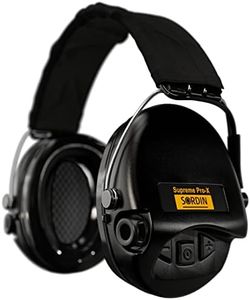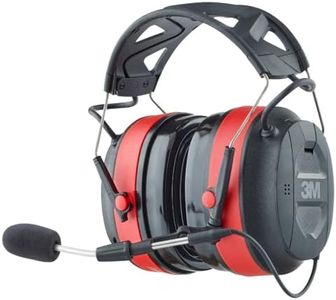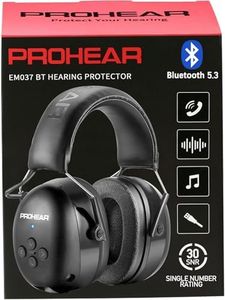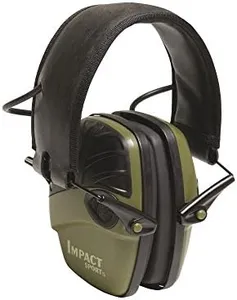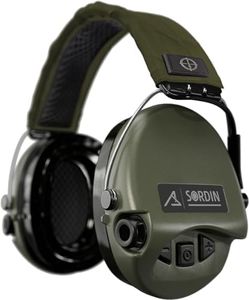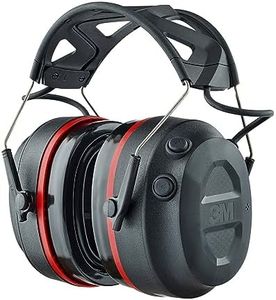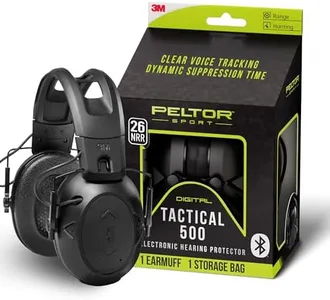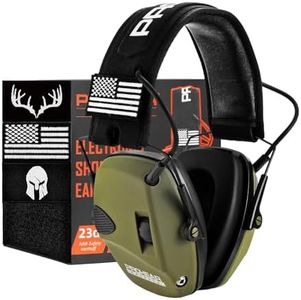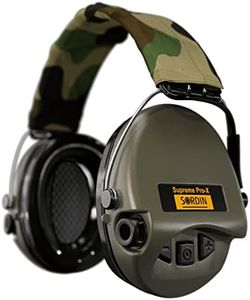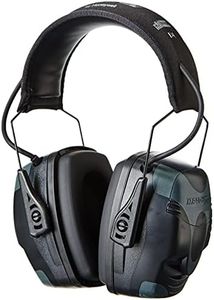We Use CookiesWe use cookies to enhance the security, performance,
functionality and for analytical and promotional activities. By continuing to browse this site you
are agreeing to our privacy policy
10 Best Electronic Ear Muffs
From leading brands and best sellers available on the web.Buying Guide for the Best Electronic Ear Muffs
Choosing the right electronic ear muffs is all about finding a balance between effective hearing protection and being able to stay aware of your surroundings. Whether you want them for shooting, industrial work, or yard work, understanding what matters will help you make a good choice. Start by thinking about where and how you’ll use them, and then look at the key features that influence comfort, safety, and usability.Noise Reduction Rating (NRR)Noise Reduction Rating, or NRR, tells you how much noise the ear muffs can block out. This number is measured in decibels (dB) and the higher the number, the greater the protection. For casual tasks or light noise, lower NRR (around 15-20 dB) is suitable, medium levels (20-25 dB) work well in louder environments like DIY workshops, while the highest NRR, above 25 dB, are best for shooting ranges or very noisy job sites. Think about the environment you want to use these in, and choose a rating that gives you enough protection without blocking out too much sound.
Electronic Sound AmplificationElectronic ear muffs use built-in microphones and speakers to allow you to hear safe sounds, like voices or alarms, while blocking out harmful noises. The quality of this feature depends on how well the technology can separate speech or quiet sounds from loud, dangerous ones. Basic models may just let you hear some sounds, while more advanced ones amplify voices even in noisy backgrounds. If you need to communicate or stay aware of your surroundings, look for muffs that offer clear audio and responsive volume controls, but if you mostly care about blocking noise, simpler electronic features may suffice.
Comfort and FitSince you might wear ear muffs for long periods, comfort is very important. This includes the padding on the ear cups, the weight of the device, and how adjustable the headband is. Lighter models with thick, soft padding and adjustable sizing are better for extended wear, while bulkier muffs can become uncomfortable over time. If you wear glasses or hats, look for models that don’t create too much pressure on your head. Try to imagine how long you’ll need them for and what other gear you’ll be wearing with them to pick the most comfortable set.
Battery Life and Power SourceElectronic ear muffs run on batteries, and how often you need to replace or recharge them can affect how convenient they are. Some run on standard AA or AAA batteries, while others have built-in rechargeable batteries. Shorter battery life is fine if you only wear them occasionally, but if you need all-day performance, look for a model that lasts longer per charge or has easy-to-swap batteries. Thinking about whether you prefer rechargeable or disposable can also help you decide.
Durability and Build QualityGood ear muffs should withstand regular use and occasional drops. Build quality refers to the sturdiness of the materials and the overall construction. Tougher plastics, reinforced headbands, and water- or sweat-resistance add to their lifespan. If you plan to use them outdoors or on a job site, more rugged models are the better choice, while lighter-duty ones work fine for home or casual shooting.
Additional Features (AUX Input, Bluetooth, Auto-Shutoff)Some electronic ear muffs come with extra features like AUX input for music, Bluetooth for wireless connections, or auto-shutoff to save battery. These additions add convenience but may not be necessary for everyone. If you like listening to music or need to take calls while wearing your muffs, these features are more important. If you just want simple protection, you can skip them.
